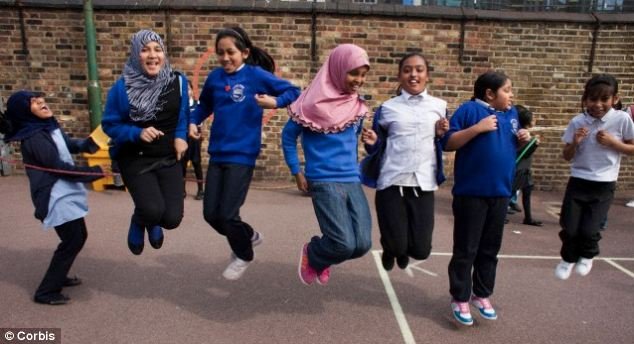 Children who spend more time playing outside are less likely to suffer from short-sightedness.
Children who spend more time playing outside are less likely to suffer from short-sightedness.
Two new studies have added to the body of evidence that daylight plays an important role in preventing the condition.
It is not known why daylight is important but some experts believe levels of the brain chemical dopamine play a role. High levels of dopamine in the eyeball have been associated with a lower risk of short-sightedness.
Short-sightedness, or myopia, is an eye condition that causes a person to see things clearly close-up but struggle to see things when they are far away.
In childhood it is correctable, but it is also linked to the development of severe forms of the eye disorder in adulthood, which increases the risks for potentially blinding diseases such as glaucoma and retinal detachment.
Research on short-sightedness is intensifying as the condition nears epidemic status in Asia and other regions, primarily in developed countries.
Shockingly, it has increased by more than 65 per cent since 1970 in the U.S..
Although it often inherited, researchers are now assessing environmental factors to help explain why rates are rising so rapidly in some populations.
The Taiwanese study observed 333 students who spent their break between lessons in the playground. These children, many of whom had formerly spent recess indoors, now spent a total of 80 minutes per day outdoors.
A nearby school acted as the control group because children were not forced to spend their break outdoors.
Students at both schools received eye examinations at the study outset and one year later.
The results showed that significantly fewer children became short-sighted or shifted toward short-sightedness in the school that required outdoor breaks, compared with the control school.
The researchers recommended that primary schools should add frequent breaks and other outdoor activities to their daily schedules to help protect children’s eye development and vision.
‘Because children spend a lot of time in school, a school-based intervention [such as an outdoors break] is a direct and practical way to tackle the increasing prevalence of myopia,’ said the leader of the study, Pei-Chang Wu, of Kaohsiung Chang Gung Memorial Hospital in Kaohsiung, Taiwan.
A separate study on the impact of daylight exposure on eye development analysed data collected in a 2005 clinical trial that included 235 Danish school children with short-sightedness.
Participants were divided into seven groups, each of which represented a different time of year.
Because daylight hours fluctuate dramatically with the seasons in Denmark – from seven hours in winter to nearly 18 in summer – access to daylight was distinct for each group.
Axial eye length – the distance from the front to the back of the eye – and vision were tested in each group of children at the beginning and end of their seasonal interval.
Axial length is an important measurement because elongation of the eye shows that myopia is worsening.
In the children with access to the fewest hours of daylight, eye growth averaged 0.19 mm; in those with access to the most daylight, eye growth was just 0.12 mm.
‘Our results indicate that exposure to daylight helps protect children from myopia,’ said the leader of the study, Dongmei Cui of Sun Yat-sen University, China.
‘Parents should encourage [children] to spend time outdoors daily.
‘When that’s impractical due to weather or other factors, use of daylight-spectrum indoor lights should be considered as a way to minimize myopia.’
Both studies were published in Ophthalmology, the journal of the American Academy of Ophthalmology.
Source: Daily Mail


Leave a Reply